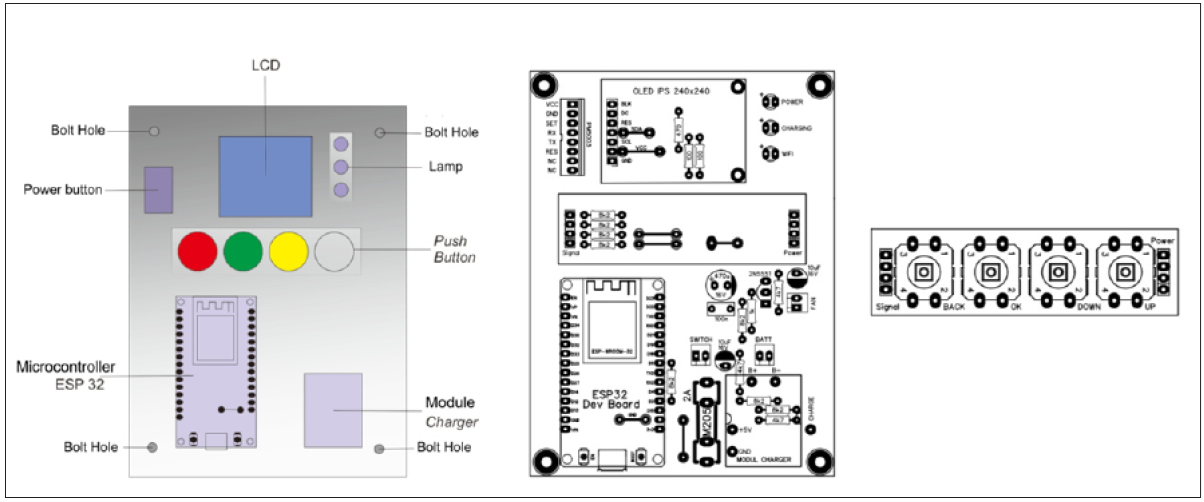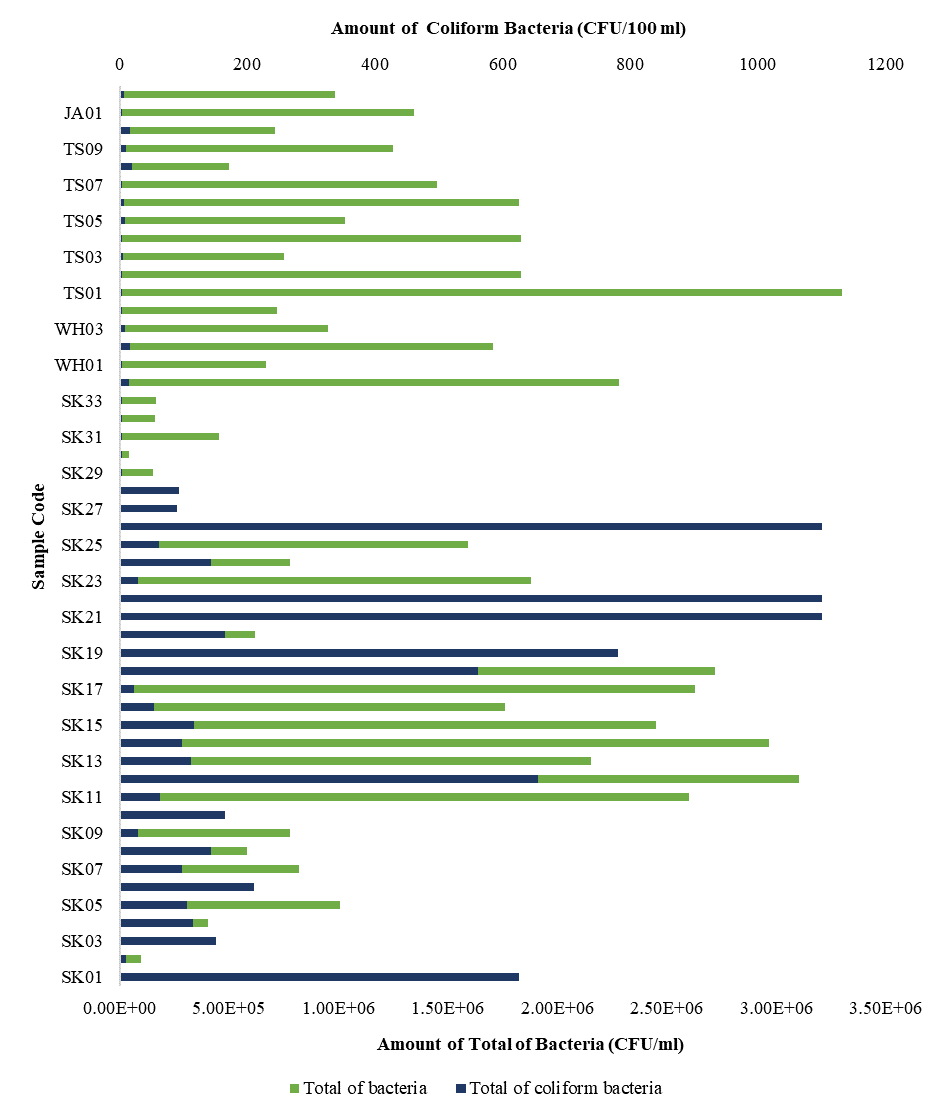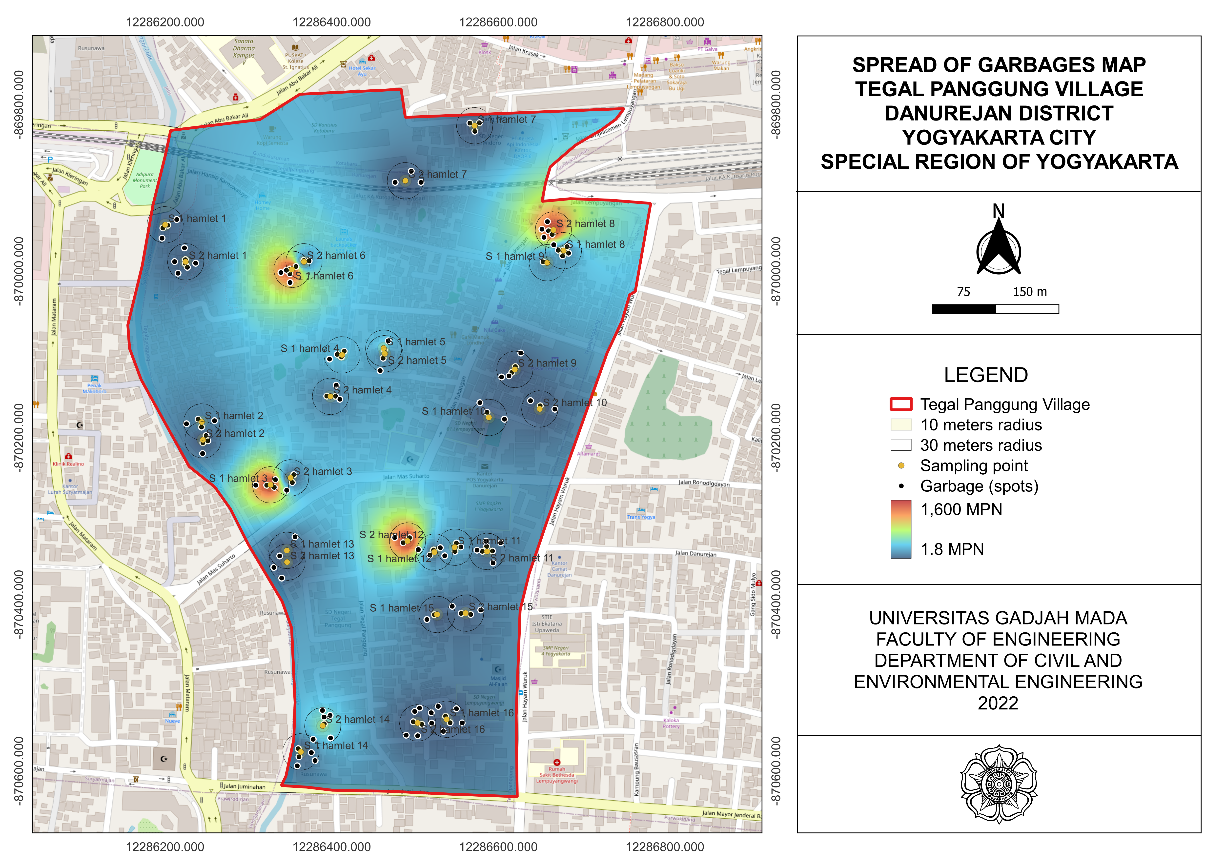Implementation of Indoor Air Quality Monitoring Systems of Particulate Matter 2.5 Based on the Internet of Things

Introduction: Indoor air quality significantly influences human health because humans can do work and rest indoors. Particulate Matter (PM2.5) is ranked 5th as the leading risk factor for death in the world and causes more than 103 million disabilities. PM2.5 concentrations are the highest, so a monitoring system is needed that can monitor air conditions in real-time and continuously. Methods: Research was conducted using the Research and Development (R&D) type. The scope of the research method is making prototypes and fieldtesting tools. Determination of field test locations is based on indicators such as (i) inadequate ventilation in the respondent's house so that air circulation does not run well; (ii) The family room and bedroom are close to the kitchen and waste incinerator, which has the potential to produce PM2.5 pollutants. Data analysis used descriptive analysis to get a picture of indoor air quality. Results and Discussion: The designed monitoring system was calibrated with the Air Quality Monitor 8 in 1 PM2.5 tool. The average PM2.5 concentration measurement for 24 hours showed that all test points exceeded the standard limit. Room 3 (family room) had the highest PM2.5 concentration, while room 4 (bedroom) had the lowest PM2.5 concentration. Conclusion: The area of air ventilation, mining activities, mining product transportation activities, the intensity of watering roadsides and home yards, and cooking activities influence PM2.5 concentrations.
Environmental Protection Agency. Indoor Air Quality (IAQ). Washington DC: Environmental Protection Agency; 2022. https://www.epa.gov/indoor-air-quality-iaq
Ministry of Health of Republic Indonesia. Indoor Air Pollution Control Management. Jakarta: Ministry of Health of Republic Indonesia; 2021.
A’yun IQ, Umaroh R. Polusi Udara dalam Ruangan dan Kondisi Kesehatan: Analisis Rumah Tangga Indonesia. J Ekon dan Pembang Indones. 2022;22(1):16–26. https://doi.org/10.21002/jepi.2022.02
World Health Organization. Household Air Pollution.Geneva: World Health Organization; 2022. https://www.who.int/news-room/fact-sheets/detail/household-air-pollution-and-health
Bahri, Raharjo M, Suhartono. Dampak Polusi Udara dalam Ruangan pada Kejadian Kasus Pneunomia: Sebuah Review. J LINK. 2021;17(2):100–104. https://doi.org/10.31983/link.v17i2.6833
Schraufnagel DE, Balme JR, Cowl CT, Matteis S De, Jung S-H, Mortimer K, et al. Air Pollution and Noncommunicable Diseases. Chest J. 2019;155(1):409–416. https://doi.org/10.1016/j.chest.2018.10.042
World Bank. The Global Health Cost of PM2.5 Air Pollution: A Case for Action Beyond 2021. Washington DC: World Bank; 2022. https://documents.worldbank.org/
Environmental Protection Agency. Sources of Indoor Particulate Matter (PM). Washington DC: Environmental Protection Agency; 2023. https://www.epa.gov/indoor-air-quality-iaq/sources-indoor-particulate-matter-pm
IQAir. Most Polluted Country and Region Ranking Based on Annual Average PM2.5 Concentration. Swiss: IQAir; 2023. https://www.iqair.com/world-most-polluted-countries
Fuadi MF, Setiani O, Darundiati YH. Pajanan Partikulat Debu Kapur dan Faktor Risiko Pekerja dengan Kejadian ISPA: Sebuah Literature Review. J Kesehat Lingkung. 2021;11(1):8–15. https://doi.org/10.47718/jkl.v11i1.1338
District Health Office of Jember. Laporan 15 Besar Kesakitan Kecamatan Puger. Jember: District Health Office of Jember; 2023.
Dewantoro W, Ulum MB. Rancang Bangun Sistem monitoring Kualitas air pada Budidaya Ikan Hias Air Tawar Berbasis Iot (Internet of Things). J Komputasi. 2021;9(2):67–75.
Palureng CM, Yulinawati H, Wijayanti A. Analisis Partikulat di Udara Ambien Kawasan Kota Tua Jakarta. J Serambi Eng. 2023;8(1):4483–4491. https://doi.org/10.32672/jse.v8i1
Ministry of Health of Republic Indonesia. Regulation of Minister of Health of Republic Indonesia No 2 Year 2023 regarding Implementation of Government Regulation No 66 Year 2014 regarding Environmental Health. Jakarta: Ministry of Health of Republic Indonesia; 2023.
Akbar MRA, Priatna E, Sutisna, Taufiqurohman I. Monitoring Kualitas Udara Menggunakan Nodemcu Esp8266 Berbasis Internet of Thing (IoT) di Ciamis. Electronica Electr J Innov Technol. 2022;3(2):73–78. https://doi.org/10.35970/e-joint.v3i2.1687
Hutabarat L, Susanti E. Perancangan Sistem Monitoring Rumah Dengan Sensor Passive Infra Red (Pir) Menggunakan Nodemcu Berbasis Internet of Things (Iot). Sigma Tek. 2020;3(2):139–147. https://doi.org/10.33373/sigma.v3i2.2740
Pela MF, Pramudita R. Sistem Monitoring Penggunaan Daya Listrik Berbasis Internet of Things Pada Rumah dengan Menggunakan Aplikasi Blynk. Infotech J Technol Inf. 2021;7(1):47–54. https://doi.org/10.37365/jti.v7i1.105
Nadhiroh N, Wardhany AK, Setiana H, Renaldy R. Penyiram Tanaman Hidroponik Otomatis Berbasis IoT Dengan PLC Outseal Dan ESP32. Electrices. 2024;6(1):17–26. https://doi.org/10.32722/ees.v6i1.6361
Sandira A, Jufrizel, Maria PS, Ullah A. Alat Monitoring dan Notifikasi Penggunaan Daya Listrik Rumah Tangga Berbasis Internet of Things. J Politek Caltex Riau. 2023;8(2):408–420. https://doi.org/10.35143/jkt.v8i2.5761
Sugandha AP, Indarwati TA. Pengaruh Push, Pull, dan Mooring terhadap Switching Intention pada Konsumen Pengguna Wifi di Era Pandemi Covid-19. J Ilmu Manaj. 2021;9(4):1537–1548. https://doi.org/10.26740/jim.v9n4.p1537-1548
Manggala GA, Irawan AB, Nugroho NE, Anasstasia TT, Utami A. Analisis Kualitas Udara Ambien berdasarkan Indeks Standar Pencemar Udara (ISPU) di Area Tambang Tanah Liat PT X, Kabupaten Tuban, Jawa Timur. In: Prosiding Seminar Nasional Teknik Lingkungan Kebumian Satu Bumi. 2023;5(1):226–231. https://doi.org/10.31315/psb.v5i1.11658
Farihah NU, Sumeru K. Pengaruh Asap Rokok pada Konsentrasi Partikulat PM10 di dalam Rumah. In: Prosiding The 12th Industrial Research Workshop and National Seminar. 2021;1(1):814–820. https://doi.org/10.35313/irwns.v12i0
Ratnasari A, Asharhani IS. Aspek Kualitas Udara, Kenyamanan Termal dan Ventilasi Sebagai Acuan Adaptasi Hunian Pada Masa Pandemi. Arsir. 2021;2(2):24-34. https://doi.org/10.32502/arsir.v0i0.3646
Wulandari W, Irawan AB, Renata A, Yudono A, Anasstasia TT. Analisis Kualitas Udara Akibat Kegiatan Penambangan Batuan Sirtu di Desa Gemampir, Kecamatan Karangnongko, Kabupaten Klaten, Provinsi Jawa Tengah. In: Prosiding Seminar Nasional Teknik Lingkungan Kebumian Satu Bumi. 2023;5(1):216–221. https://doi.org/10.31315/psb.v5i1.11656
Monica RR, Asrifah D, Suharwanto S. Evaluasi Dampak Pertambangan Terhadap Lingkungan di Sekitar Kawasan Pertambangan Tras, Desa Cipanas, Kecamatan Dukupuntang, Kabupaten Cirebon. In: Prosiding Seminar Nasional Teknik Lingkungan Kebumian Satu Bumi. 2021;3(1):37–44. https://doi.org/10.31315/psb.v3i1.6234
Purba HK, Irawan AB, Suharwanto, Kristanto WAD, Utami A. Pengendalian Kualitas Udara Ambien Berdasarkan Parameter PM2,5 dan PM10 di Area Tambang Batubara PT . Xxx di Lebak Budi, Kecamatan Merapi Barat, Kabupaten Lahat, Sumatera Selatan. In: Prosiding Seminar Nasional Teknik Lingkungan Kebumian Satu Bumi. 2023;5(1):199–205. https://doi.org/10.31315/psb.v5i1.11654.g6135
National Meteorology Climatology and Geophysics Council. Variasi Konsentrasi Particulate Matter 2.5 (PM2.5) serta Hubungannya dengan Curah Hijan di Wilayah Kota Bengkulu. Bengkulu: National Meteorology Climatology and Geophysics Council; 2023. 22–31 p. https://www.balai2bmkg.id/index.php/buletin_mkg/article/view/64
Chandra I, Putri SL, Salam RA, Rachmawati LM, Ananta Hasmul N, Syahputra MFH. Pra-Studi Analisis Paparan Konsentrasi PM2,5 dan CO2 di dalam Rumah Preliminary Study Analysis of Exposure to PM2.5 and CO2 Concentrations in the House. J Teknol Lingkung. 2023;24(1):98–106. https://doi.org/10.31315/psb.v3i1.6234
Kusumaningsih DA, Lusantono OW, Dwinagara B. Analisis Dampak Penambangan Batu Granit Terhadap Peningkatan Total Suspended Particulate (TSP) dan Kebisingan di Ijin Usaha Pertambangan (IUP) PT ABC. J Inov Pertamb dan Lingkung. 2022;2(1):9–19. https://doi.org/10.15408/jipl.v2i1.24467

This work is licensed under a Creative Commons Attribution-NonCommercial-ShareAlike 4.0 International License.
1. Copyright of all journal manuscripts is held by the Jurnal Kesehatan Lingkungan.2. Formal legal provisions to access digital articles of electronic journal are subject to the provision of the Creative Commons Attribution-ShareAlike license (CC BY-NC-SA), which means that Jurnal Kesehatan Lingkungan is rightful to keep, transfer media/format, manage in the form of databases, maintain, and publish articles.
3. Published manuscripts both printed and electronic are open access for educational, research, and library purposes. Additionally, the editorial board is not responsible for any violations of copyright law.
JKESLING by UNAIR is licensed under a Creative Commons Attribution-ShareAlike 4.0 International License.







































